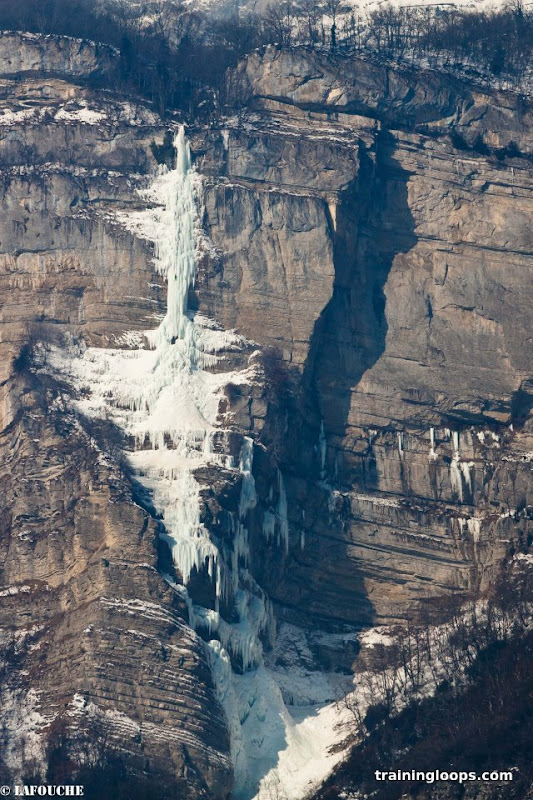Much against my better judgement KenR persuaded me out to the Via Ferrata in Crolles. It is supposed to be one of the hardest in France. Luckily there is a “kids” route which Ken took for a warm up before a solo on the main event.
We took the Funi up to the mid-way station then climbed a short path for 20 minutes to the base. The first part of the climb is common, the Pilier du Belvédère. This route has a couple of minor overhangs and is very vertical. There is a little ledge about 2/3rds up where you can rest if you wish.
From the top of the Belvédère a horizontal shelf called the Vire à vélo takes you to the base of the Grand Dièdre (red line), a 150 meter vertical pillar with an overhang early on. This is the hard route, Ken climbed it in the afternoon as it goes into shade around 2.30pm this time of year. This is the section which saw a fatality in May and there have been 4 deaths on the route. Ken suggests you should be indoor climbing 5c/6a before attempting it, at least without a qualified guide.
We tracked right (north) under the waterfall to the Vire des Lavandières. You can walk out here to the main hiking trail if you wish.
On the second second section I spotted this cleverly disguised grass hopper
cool!
The Lavandières is as hard as the Pilier du Belvédère in a couple of spots but is less sustained. There is a complicated traverse/overhang half way up the pitch and the exit to a ladder is a short overhang where you have your feet on well polished rock. From the ladder you can hang right to rejoin the hiking trail via two bridges and the top of the funiculaire is 15 minutes walk. If you get the 10am tram you should be able to make the 12.30 return (the last tram before a lunch break) otherwise you can eat on the plateau.
The cascade was climbed this winter by Erwan Lelann and Arnaud Guillaume. The first time Erway has seen the cascade sufficiently frozen to attempt a climb.


